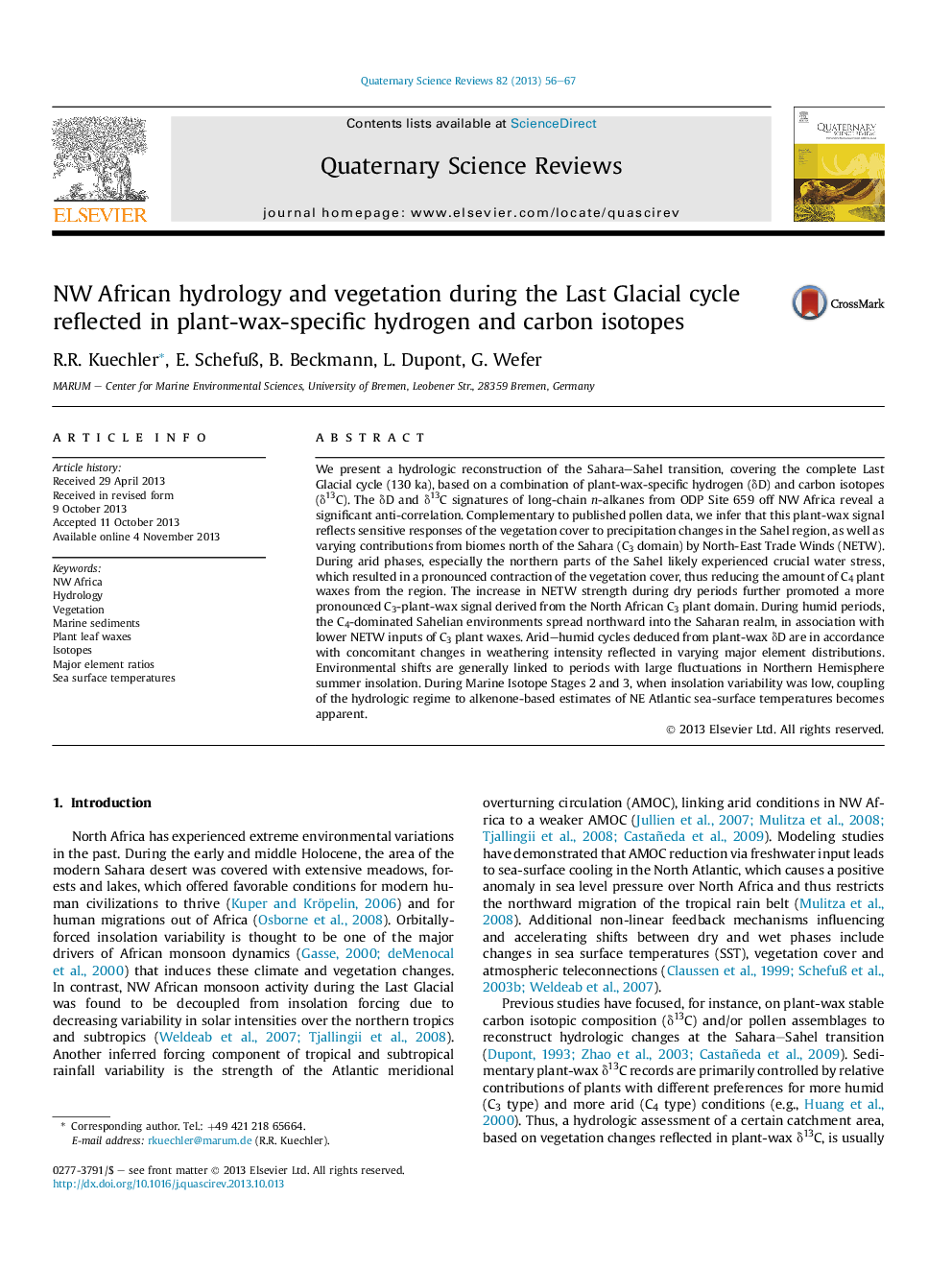| کد مقاله | کد نشریه | سال انتشار | مقاله انگلیسی | نسخه تمام متن |
|---|---|---|---|---|
| 4735429 | 1640852 | 2013 | 12 صفحه PDF | دانلود رایگان |

• Anti-correlation of plant-wax δD and δ13C throughout the Last Glacial cycle.
• Saharan C4 grass expansion during humid periods.
• More C3 plant waxes via stronger trade winds in arid phases.
• Orbital insolation forcing during high-amplitude insolation variability.
• Sea surface temperature forcing during low-amplitude insolation changes.
We present a hydrologic reconstruction of the Sahara–Sahel transition, covering the complete Last Glacial cycle (130 ka), based on a combination of plant-wax-specific hydrogen (δD) and carbon isotopes (δ13C). The δD and δ13C signatures of long-chain n-alkanes from ODP Site 659 off NW Africa reveal a significant anti-correlation. Complementary to published pollen data, we infer that this plant-wax signal reflects sensitive responses of the vegetation cover to precipitation changes in the Sahel region, as well as varying contributions from biomes north of the Sahara (C3 domain) by North-East Trade Winds (NETW). During arid phases, especially the northern parts of the Sahel likely experienced crucial water stress, which resulted in a pronounced contraction of the vegetation cover, thus reducing the amount of C4 plant waxes from the region. The increase in NETW strength during dry periods further promoted a more pronounced C3-plant-wax signal derived from the North African C3 plant domain. During humid periods, the C4-dominated Sahelian environments spread northward into the Saharan realm, in association with lower NETW inputs of C3 plant waxes. Arid–humid cycles deduced from plant-wax δD are in accordance with concomitant changes in weathering intensity reflected in varying major element distributions. Environmental shifts are generally linked to periods with large fluctuations in Northern Hemisphere summer insolation. During Marine Isotope Stages 2 and 3, when insolation variability was low, coupling of the hydrologic regime to alkenone-based estimates of NE Atlantic sea-surface temperatures becomes apparent.
Journal: Quaternary Science Reviews - Volume 82, 15 December 2013, Pages 56–67